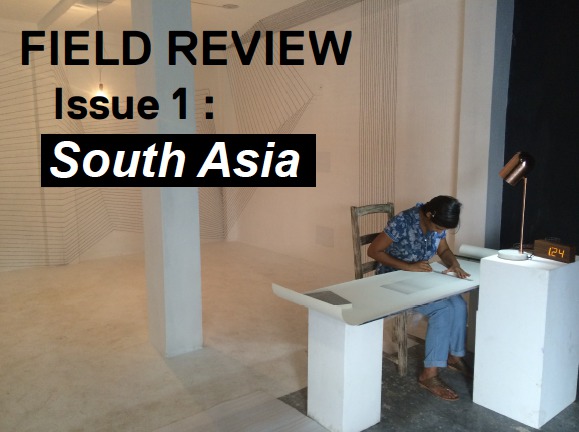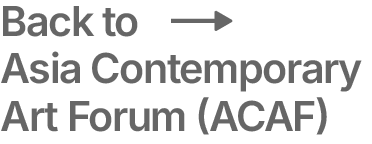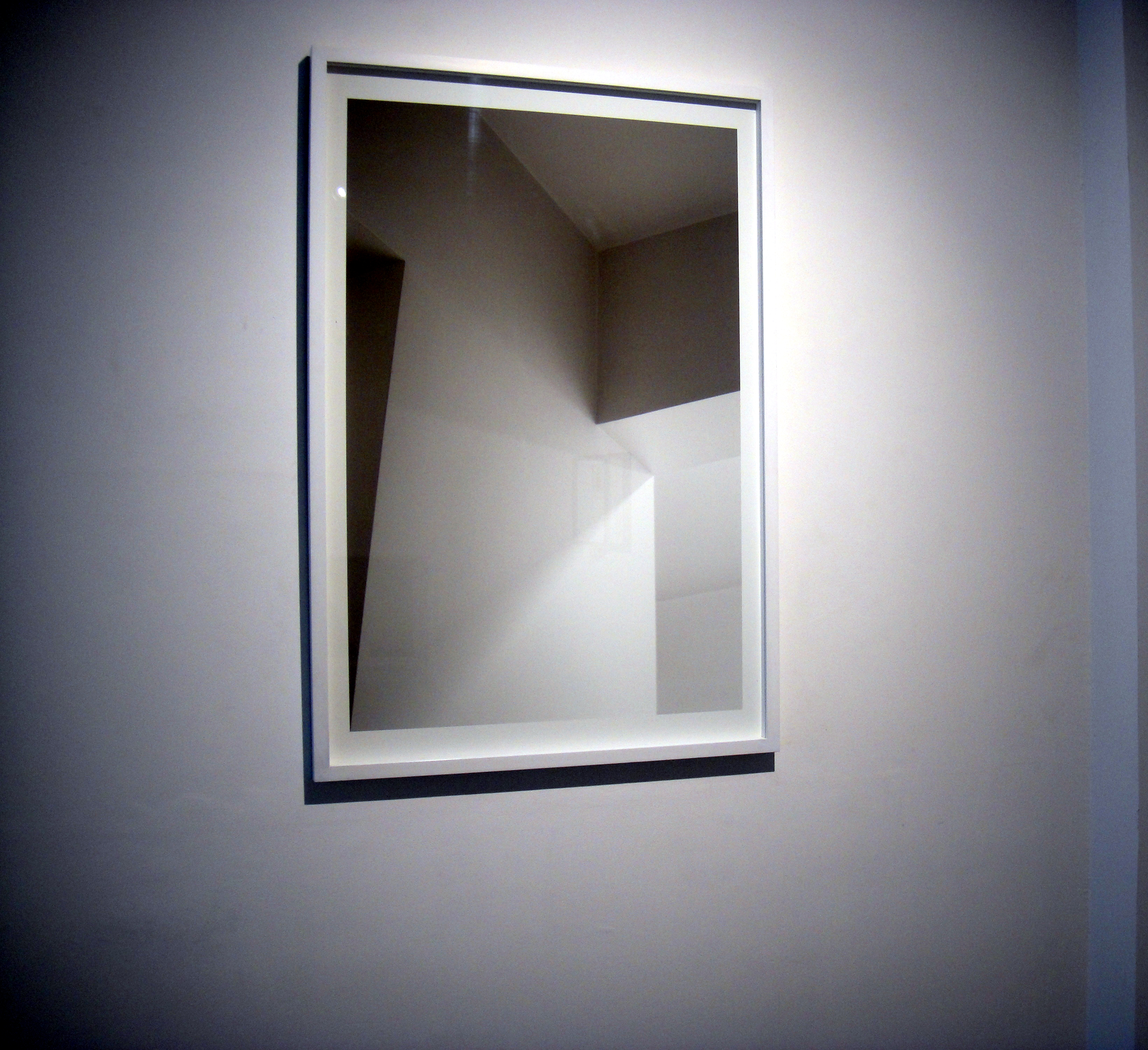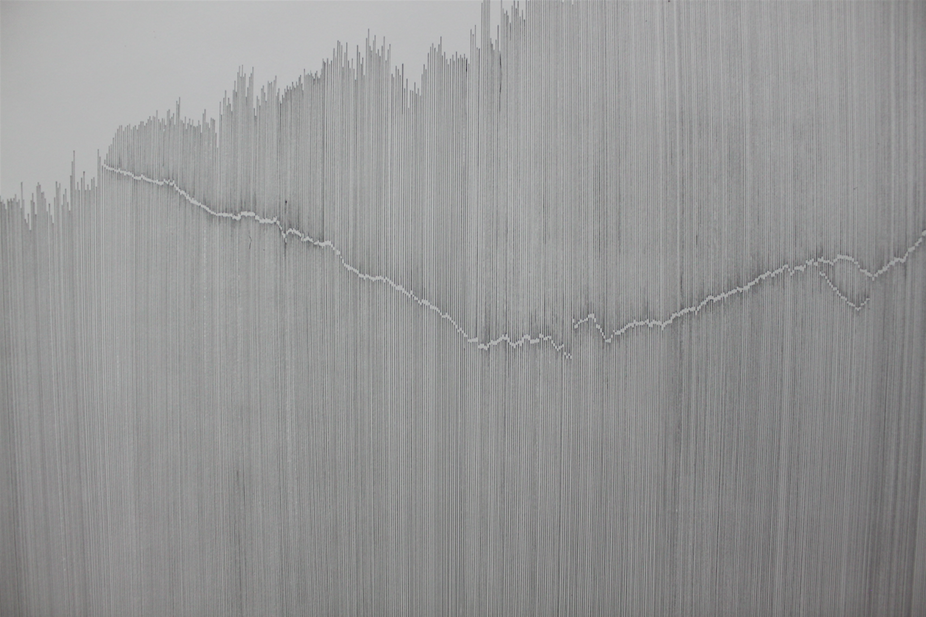FIELD REVIEW: South Asia

Introduction
Meenakshi Thirukode
______________________________________
Abstraction De-Constructed through the Lens of Post-Colonialism
Achia Anzi
Grasping at the Untold
Jyoti Dhar
Kumar Vaidya: Through the Lens of Erasure and Invisibility
Meenakshi Thirukode
Yasmin Jahan Nupur: Dancing in the Non-Spaces of Performance
Zeenat Nagree
The Poetics of Absence and Presence in Parul Gupta’s Art: A Case for Revisiting Theories and Histories of Abstraction
Somak Ghoshal
The Immediacy Of Rejection: Music, Curation, and Sincerity in New India
Rana Ghose
______________________________________
About the Author
Somak Ghoshal
was educated at Calcutta and Oxford. He has worked in publishing and media in India for the last ten years. Currently, he’s a senior editor at The Huffington Post, writing mostly on politics, books and the arts.
The Poetics of Absence and Presence in Parul Gupta’s Art:
A Case for Revisiting Theories and Histories of Abstraction
Somak Ghoshal
Let me begin with a disclaimer and a clarification. The case study at the heart of this brief reflection on abstract art in South Asia is the work of the Delhi-based artist, Parul Gupta. But this essay is, by no means, either a detailed survey of her complex and evolving style or an attempt to trace the wide range of practices carried out by artists from the region working in this genre. Rather, it is only a statement of my personal discomfort with the way we, who are living and working in the arts in South Asia, are conditioned to create, look at and process abstraction in our arts – through an overwhelmingly Western perspective, ignoring the local histories that flow into our practices and, worse still, by divorcing our gaze from that part of our sensibility which is honed by music, theatre, literature and other performance cultures. My theoretical frame is informed by these twin concerns.
‘Whether one knows art history or not, art begins pre-intellectually, beyond language,’ art critic Jerry Saltz recently wrote in a polemical essay in the Vulture. His statement is a reaction to the tyrannical hold of art history on our responses to contemporary art and feels strikingly resonant especially in the case of abstract art.
The story of contemporary abstract art, like most other spheres of cultural production, is really one of Western hegemony. Not only is it seen as originating in the West, but its practice in other parts of the world is often defined it relation to the legacies of twentieth century modernism from Britain, North America and Europe. For a majority of makers and consumers of art from South Asia, as well as their counterparts in other non-Western countries, a crucial challenge therefore is to create an idiom that is sufficiently original, without being burdened with pre-existing aesthetic frameworks that already influence its semantics.
The question naturally arises: Is it possible to experience the truth of art emerging from this part of the world without having it mediated through the history and theory of Western art? In what sense, and by what means, can we recover the story of South Asian art (and I invoke this term to refer to geographical origins rather than specific characteristics) without falling back on the narratives that have tyrannized our eye for a century and more?
A work of figurative art may be able to signal its uniqueness relatively easily by its sheer rootedness to a location and culture. You could look at Jamini Roy’s signature style of figures with spindly eyes and be reminded of Kalighat pata-chitra. But in the case of abstract art, locational specificities may get diffused by its aesthetic universality. An artist may evoke geometric patterns as allusions to the styles of weaving prevalent in, say, the states of Orissa or Chhattisgarh in India. However, a viewer unaware of these places and their folk traditions might make sense of the squares and triangles by recalling Mondrian or Malevich or Bridget Riley. In this sense, abstract art can turn into a double-edged sword, at once liberating the eye from the rigors of the specific but also constantly harking back to models and traditions set by generations of artists and art historians.
How do we teach ourselves to look art through a lens that is not overwhelmingly, ubiquitously Eurocentric? Is there a vocabulary that enables us to talk about art in terms not circumscribed by theory, history and jargon?
The answer to these questions came to me, once again, in the opening paragraph of Saltz’s essay I mention above. The relevant passage is worth quoting in detail.
These days our definition of [art] is mainly art informed by other art and art history. Especially in the last two centuries — and tenaciously of late — art has examined its own essences, ordinances, techniques, tools, materials, presentational modes, and forms. To be thought of as an artist someone must self-identify as one and make what they think of as art. This center cannot hold. Why? It is far too tight to let real art breathe.
For art to breathe freely, it must be allowed to emerge from the subliminal recesses of the mind, where literature, music, theatre, movies and a cluster of related activities come home to roost along with autobiography, lived experience, memory and desire. It must begin, as Saltz puts it, ‘pre-intellectually’, in the realm of the senses, emotions and feelings, only later to be forged into its distinct shape and destiny in the smithy of the intellect.
A couple of years ago, when I saw the Delhi-based artist Parul Gupta’s work for the first time, I felt an instant affinity with her practice because of my personal obsession with minimalism and austerity. In hindsight, after reading Saltz’s essay and trying to formulate a response to abstract art in South Asia, I find myself drifting back to her work and its binaries contained in it: frozen rigidities of lines and angles brought to life by the warmth of a fluid interpolation of light.
Triggered by my initial reaction to Gupta’s art, several associations came to mind: the sharp lines and angularity of her compositions reminded me of Nasreen Mohamedi’s cryptic work, often existing in the nebulous zone between drawing and photography. As I went down that rabbit hole, I stumbled upon memories of Cornelia Parker’s spiky sculptures, the hair- and wire-based installations of Mona Hatoum, and the dizzying Op Art of Bridget Riley.
As you would expect, my thoughts did not remain confined to the world of the plastic arts alone. The beauty of free associations, and their excitement, is in their ability to open the floodgates to the bizarre and the arbitrary in the human mind.
So, while skimming the surface of the work, I thought of enclosed spaces, the sharp edge of a knife, the fragility of sticks, creases on a piece of paper, the brittleness of mortal objects – all the coordinates of the physical world her work seemed to be referring to.
I also recalled art historian Rosalind Krauss’s famous meditation on the predominance of grids in Western art, the interlocking planes of the Panopticon described by the philosopher, Jeremy Bentham, and later theorized by Michel Foucault, the totalizing system of Piranesi’s prisons of the imagination, the linearity of Le Corbusier’s architectural vision, and a poem by Wallace Stevens, ‘Long and Sluggish Lines’, I had read long ago but had tucked away in a corner of my mind.
In the last instance, the poet, writing in his seventies, is looking on a winter scene through his window and notices smoke coiling out of a neighbour’s chimney, describing wispy lines on the horizon. ‘The life of the poem in the mind has not yet begun,’ Stevens writes, almost in a reverie, a line that seems to me to beautifully capture the process of creating as well as the struggle to make sense of a work of abstract art.
Months later, during a telephone conversation, Gupta would reveal to me her own creative impulses: a prolonged phase of hair fall when she was a student in Britain, her abhorrence of most forms of noise, admiration for the work of John Cage, and the quest to make sense of silence. Her practice, grounded in the principles of architecture and geometry, uses the mode of drawing – in the broadest sense of the term – to achieve these aims.
‘My intention is to make the viewer question the spaces they inhabit,’ Gupta told me. This questioning begins inside the immediate white cube of the gallery where they are likely to have encountered her work, but crosses other thresholds, breaking the barriers between the private and the public. The interplay of darkness and light, shadow and illumination, shading and grading that is facilitated by the act of drawing on paper is equally enriched by photography. To Gupta, making an impression on film is but an extension of tracing lines on paper, with shared synergies and affinities. The content is what matters; the technique is but subservient to the effect.
Looking at the ubiquity and dominance of the grid in Western art Krauss had written in 1979, ‘the grid announces its will to silence, its hostility to literature, to narrative, to discourse’. By lowering the barrier ‘between the arts of vision and those of language’, the grid, she wrote, ‘has been almost totally successful in walling the visual arts into a realm of exclusive visuality and defending them against the intrusion of speech’.
The premise of her argument has been challenged variously over the last three decades, but the most fundamental blow to it is cast by Saltz’s call for a ‘pre-intellectual’ response to art. To let ourselves to react freely to abstraction, or to any art form for that matter, the singular necessity may be to let the work get under our skin, to make ourselves vulnerable to it and, in doing so, to allow its meaning to reveal in our consciousness.




